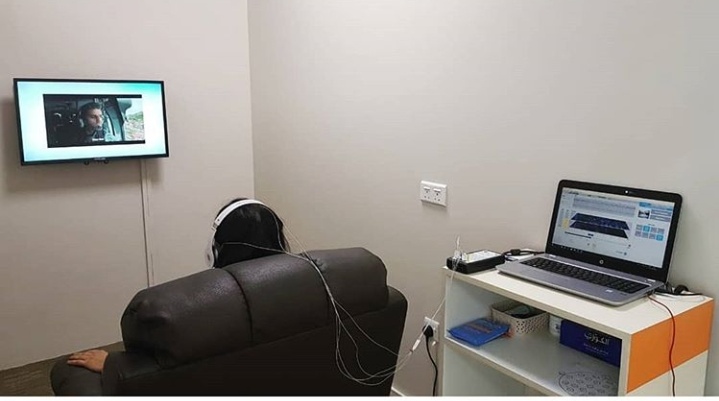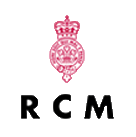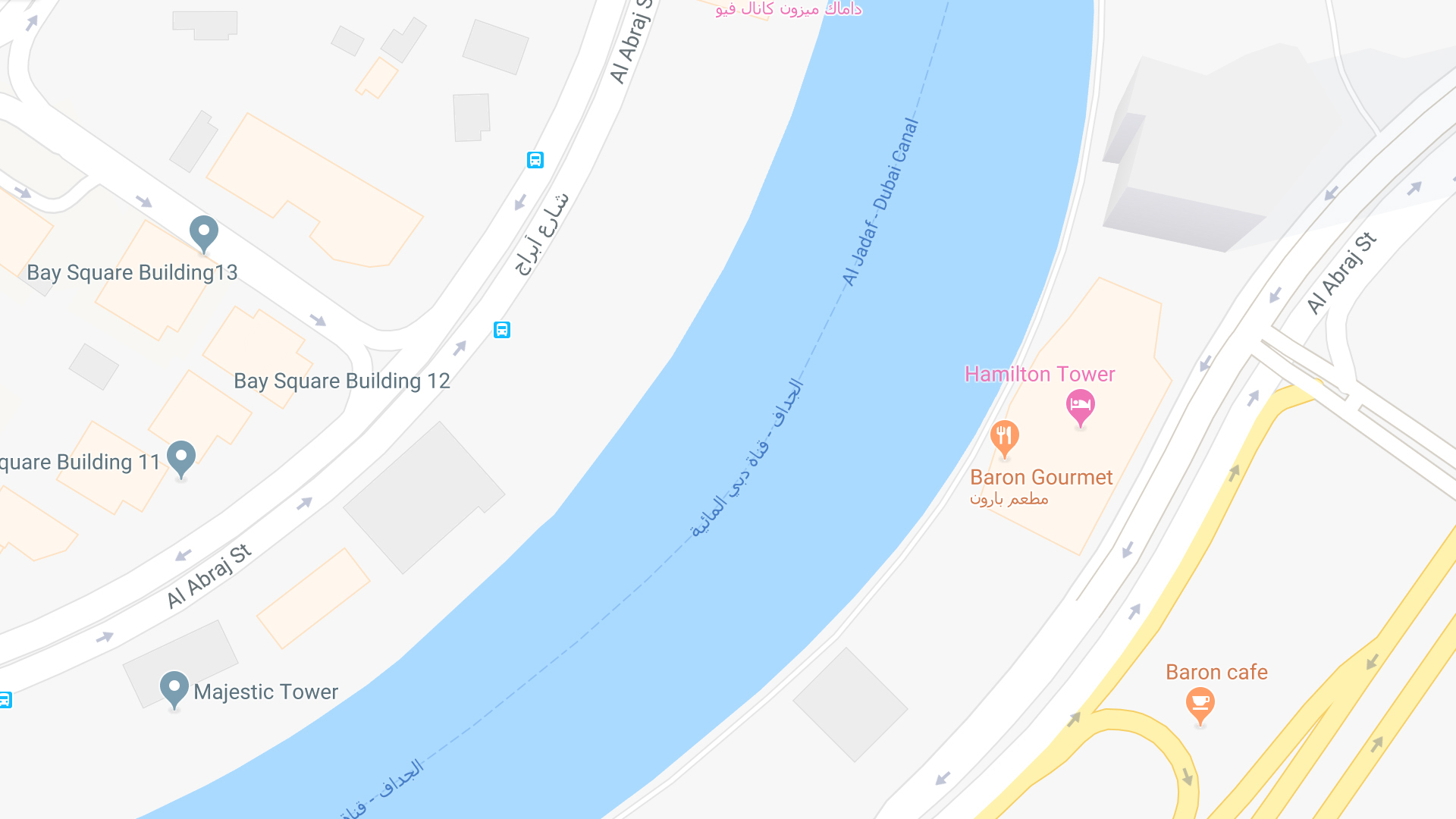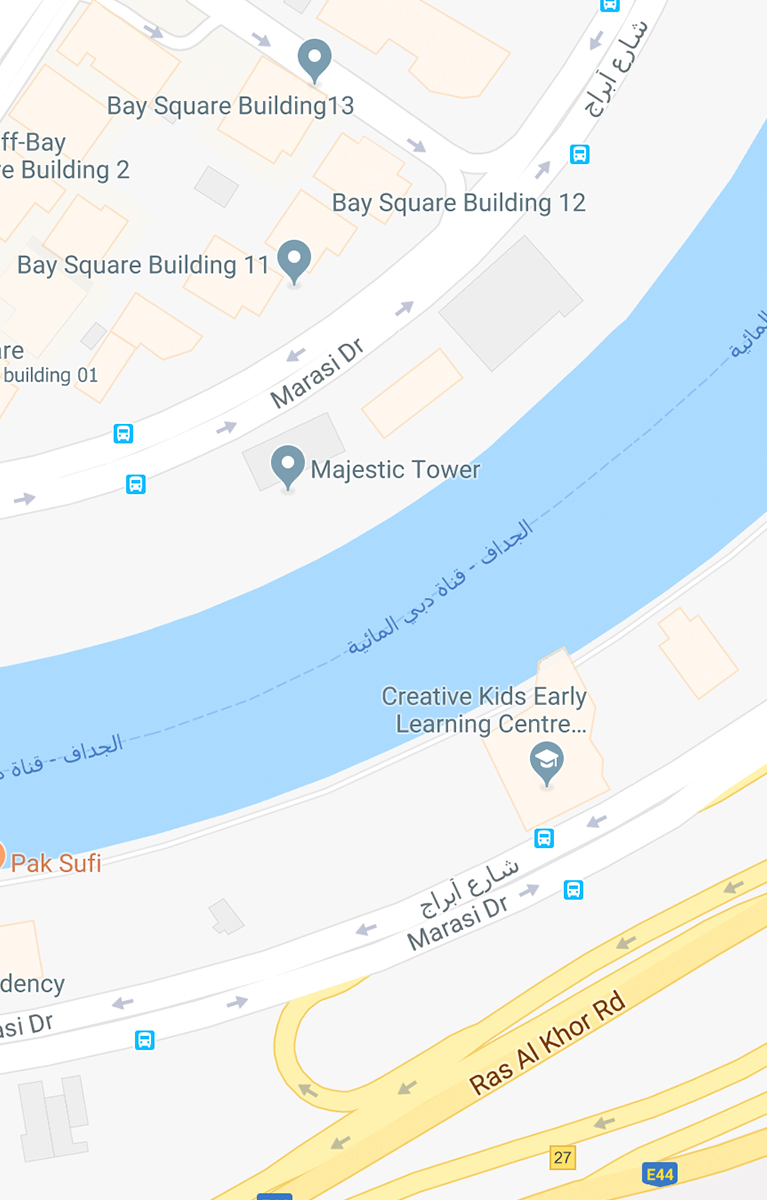Neurofeedback Therapy for ADHD Treatment: How It Works
The brain is powerful, and neurofeedback therapy works by tapping into that power. Specifically, it uses the power of the brain to train and, thus, heal itself.
To do this, neurofeedback therapy provides the brain instant feedback about its own brain activity.
Instant Feedback: An Essential Component
Think of it this way. Sometimes, you don’t realize you’re smiling. However, when somebody tells you about it and compliments you about your glowing expression, the chances are high that you will consciously try to keep the smile on your face. The consequence: You will smile more often.
Before you get to that particular consequence, however, first you will need to learn about how smiling makes you look. That’s feedback, and it is vital if you want to change someone’s behavior.
That is basically the way neurofeedback therapy works. This treatment method for ADHD provides the brain feedback on its brain activity so that it can work on consciously and actively controlling it. Before the brain can change the way it “behaves,” it must first be made aware of how it is behaving (i.e., its brainwave patterns) and what comprises desirable “behavior” or brainwave patterns.
In neurofeedback therapy, EEG sensors are attached to the scalp to monitor brainwave activity. Whenever the system detects the triggering brainwave pattern, the brain is immediately “told” about it through sensory feedback — e.g., a clearer sound and picture in the movie you’re watching.
Thus, the brain is made aware that it has done something good. Consequently, it is able to consciously strive towards achieving the same desirable brainwave pattern again and again.
Operant Conditioning: The Other Half of the Equation
There’s a reason neurofeedback therapy provides sensory feedback — say, a clearer sound and picture on the television. Aside from seamlessly letting the brain know about a desirable brainwave pattern, it also rewards the brain. This will ensure that the brain will want to repeat the desired brainwave pattern and, through repetition, learn to do it without much effort and without conscious prompting.
This is operant conditioning. To paraphrase the definition by the American Psychological Association (n.d.), operant conditioning is a process that uses the consequences of behavior to induce one to learn a particular behavior or to change their behavior.
In other words, operant conditioning means acclimating someone to act in a particular way to experience a desired outcome or to avoid a painful punishment. It pertains to reinforcing positive behavior with a reward and discouraging negative behavior with a punishment.
Operant conditioning works like this. If a dog sits down when you say “Sit,” you reward the behavior with a doggie treat. If you continue repeating this exercise over and over again — you saying “Sit,” the dog sitting, and you rewarding the dog with a treat — you reinforce the dog’s positive behavior, i.e., the dog sitting down when it hears you say “Sit.”
In neurofeedback therapy, the brain is rewarded with a clearer audio and video whenever it exhibits the desired brainwave pattern. The repetition of this exercise — the reward of a clearer audio and video whenever the desired brainwave activity takes place — will reinforce the desired behavior. In other words, it will eventually lead to learning or behavioral change — that is to say, the brain will eventually “learn” the brainwave pattern that always leads to the reward.
Book a Free 15-Minute Consultation
Learn More About Neurofeedback
Sitaram R. et al. (2017).
Closed-loop brain training: the science of neurofeedback.Nature Reviews Neuroscience, 18, 86–100.
Wigton N. & Krigbaum G. (2015).
A Review of qEEG-Guided Neurofeedback. NeuroRegulation, 2(3), 149-155.
Ros T. et al. (2014).
Tuning pathological brain oscillations with neurofeedback: A systems neuroscience framework. Frontiers in Human Neuroscience, 8(December), Article 1008.
Ghaziri J. et al. (2013).
Neurofeedback training induces changes in white and gray matter. Clinical EEG and Neuroscience, 44(August 2016), 265–72.
Coenan A. et al. (2009).
Efficiency of Neurofeedback Treatment in ADHD: the Effects on inattention, Impulsivity and Hyperactivity: a Meta-Analysis.Journal of Clinical EEG & Neuroscience, 40(3), 180-189.
Yue Hou,Shuqin Zhang,Ning Li,Zhaoyang Huang,Li Wang,Yuping Wang (2021).
Neurofeedback training improves anxiety trait and depressive symptom in GAD. Brain and Behavior. 11. 10.1002/brb3.2024.
Dreis, Stephanie & Gouger, Angela & Perez, Edward & Russo, G. & Fitzsimmons, Michael & Jones, Mark. (2015).
Using Neurofeedback to Lower Anxiety Symptoms Using Individualized qEEG Protocols: A Pilot Study. NeuroRegulation. 2. 137-148. 10.15540/nr.2.3.137.
Kerson, C., Sherman, R. A., & Kozlowski, G. P. (2009).
Alpha suppression and symmetry training for generalized anxiety symptoms. Journal of Neurotherapy, 13(3), 146–155.
Hammond, D.. (2005).
Neurofeedback Treatment of Depression and Anxiety. Journal of Adult Development. 12. 131-137. 10.1007/s10804-005-7029-5.
Hammond, D.. (2005).
Neurofeedback with anxiety and affective disorders, Child and Adolescent Psychiatric Clinics of North America, Volume 14, Issue 1, 2005, Pages 105-123.
Thomas, J.E., & Sattlberger, E. (2007).
Treatment of Chronic Anxiety Disorder with Neurotherapy: A Case Study. Journal of Neurotherapy, 2(2).
Kosari Z, Dadashi M, Maghbouli M, Mostafavi H.(2019).
Comparing the Effectiveness of Neurofeedback and Transcranial Direct Current Stimulation on Sleep Quality of Patients With Migraine. Basic Clin Neurosci. 2019 Nov-Dec;10(6):579-588. doi: 10.32598/BCN.10.6.651.3. Epub 2019 Nov 1. PMID: 32477475; PMCID: PMC7253802.
Dobrushina, O., Arina, G., Osina, E., & Aziatskaya, G. (2017).
Clinical and Psychological Confirmation of Stabilizing Effect of Neurofeedback in Migraine. European Psychiatry, 41(S1), S253-S253. doi:10.1016/j.eurpsy.2017.02.045
Walker JE. (2011).
QEEG-guided neurofeedback for recurrent migraine headaches. Clin EEG Neurosci. 2011 Jan;42(1):59-61. doi: 10.1177/155005941104200112. PMID: 21309444.
Perez-Elvira, Ruben & Carrobles, José & Bote, Diego & Oltra-Cucarella, Javier. (2019).
Efficacy of Live Z-Score Neurofeedback Training for Chronic Insomnia: A Single-Case Study. NeuroRegulation. 6. 93-101. 10.15540/nr.6.2.93.
Kosari Z, Dadashi M, Maghbouli M, Mostafavi H. (2019).
Comparing the Effectiveness of Neurofeedback and Transcranial Direct Current Stimulation on Sleep Quality of Patients With Migraine. Basic Clinical Neuroscience. 2019;10(6):579-588.
ADHD Types
ADHD can take one of three types: predominantly inattentive presentation, predominantly hyperactive-impulsive presentation, and combined presentation.
When it comes to ADHD diagnosis, Dubai and UAE cases of ADHD are mostly predominantly inattentive in presentation. Specifically, the predominantly inattentive presentation is the most prevalent among school-age children at 7.5%, followed by predominantly hyperactive-impulsive presentation at 3.5%, and combined presentation at 1.5% (Khamis, 2011).
1. Predominantly Inattentive Presentation
In predominantly inattentive ADHD, there are more inattentive than hyperactive-impulsive behaviors. Inattention is the defining characteristic of this type of ADHD presentation.
In other words, a person with this type of ADHD finds it challenging to pay attention, follow conversations, focus on assignments, and comply with instructions. The person is easily distracted, so they find it difficult to complete tasks. They are also forgetful, typically forgetting procedures and daily routines.
2. Predominantly Hyperactive-Impulsive Presentation
Hyperactive and impulsive behaviors are dominant in individuals with this type of ADHD presentation, although this does not preclude inattentive behaviors. People often describe a person with hyperactive-impulsive ADHD presentation as fidgety and impatient.
Children with this type of ADHD are noticeably hyperactive. Young children especially look like whirlwinds of activity, always moving, running around, and climbing. It can be challenging for them to remain seated for long, say, for lessons or a meal. Meanwhile, adults may be less overtly hyperactive, but they are still often restless and agitated.
This type of ADHD also manifests itself in impulsive behaviors. Children with this type of ADHD presentation seem not to think before they act. Thus, they will often talk at inappropriate times, even interrupting other people’s conversations. They may also grab things from other people or behave improperly because they find it hard to wait their turn or obey instructions.
While adults may not grab things from others or do other quintessentially childish behaviors, they may still find it difficult to control their impulses. Thus, they can be very impatient when waiting in queues, and they may be prone to angry outbursts.
3. Combined Presentation
In persons with combined presentation ADHD, both inattentive and hyperactive-impulsive behaviors are present to a similar degree.
Get ADHD diagnosis and treatment in Dubai.
Book a Free 15-Minute Consultation
ADHD Symptoms and Diagnosis
Before arriving at an ADHD diagnosis, specialists conduct a thorough and multi-step evaluation process. Medical professionals can diagnose ADHD only after careful observation, information gathering, and psychological and physical testing. Essentially, a meticulous assessment is necessary to establish two things:
- That ADHD symptoms are indeed present in an individual, and
- That they are present to the degree that disrupts or interferes with the way the individual functions in different settings (e.g., home, school, workplace, etc.).
Healthcare professionals use the Diagnostic and Statistical Manual, Fifth Edition (DSM-5) by the American Psychiatric Association as a tool or guideline in diagnosing ADHD in both children and adults. DSM-5 contains the specific behaviors typically exhibited by someone who has ADHD.
Specific Symptoms
The following are the specific symptoms that medical professionals look out for when evaluating an individual for ADHD.
Inattention Symptoms
The following are inattention symptoms.
- Often neglects to pay attention to details or makes careless mistakes
- Often unable to keep attention on a task or activity
- Often seems like they are not listening when directly spoken to
- Often fails to obey directions or instructions and thus fails to finish tasks, chores, assignments, or duties
- Often has trouble organizing tasks and activities
- Often exhibits avoidance or dislike of tasks requiring sustained mental exertion, thus typically reluctant to do schoolwork or homework
- Often misplaces things and tools they need for tasks and activities
- Often easily distracted
- Often forgetful
Hyperactivity and Impulsiveness Symptoms
The following are hyperactive-impulsive symptoms.
- Often displays fidgety or jittery behavior like squirming and tapping of hands or feet
- Often finds it difficult to remain seated, even when such behavior is expected, say, in a classroom setting or while eating meals
- Often runs around and climbs, especially in younger children; teens and adults may simply display signs of restlessness
- Often finds it difficult to remain quiet when watching TV or doing some other leisure activities
- Often seems unable to stay still; seems so full of energy they seem driven by a motor
- Often talks a lot
- Often answers questions prematurely, say, before the question is completed
- Often unable to wait for their turn
- Often interrupts other people’s conversations or activities
When Is an ADHD Diagnosis Given?
To sum up what is written on the DSM-5, an individual must fulfill the following criteria to be diagnosed with ADHD.
1. A sufficient number of symptoms
- There should be at least six inattentive or hyperactive-impulsive symptoms if the individual is 16 years old or younger.
- There should be at least five inattentive or hyperactive-impulsive symptoms if the individual is 17 years or older.
In the past few decades, medical institutions and practitioners have increasingly used brain mapping as a relevant tool for ADHD diagnosis.
Through quantitative electroencephalogram (QEEG) brain mapping, psychologists and physicians are able to scan and study an individual’s brainwave patterns. If the brainwave activity displays patterns or characteristics typical of ADHD, such findings are important for accurately evaluating the person’s condition. Learn more about the brain mapping process and pricing here.
2. Persistence of symptoms
ADHD symptoms must be persistent or long-lasting. In other words, they should have been present for at least six months.
3. Inappropriate or disruptive symptoms
The symptoms of inattention are inappropriate given the individual’s developmental level.
The symptoms of hyperactivity and impulsiveness are disruptive and inappropriate for the individual’s developmental level.
4. Childhood onset
The individual must have exhibited several inattentive or hyperactive-impulsive symptoms before they turned 12.
While the symptoms in adults with ADHD may look different compared to childhood ADHD — i.e., a hyperactive adult will have distinct symptoms from a hyperactive child — there is a general consensus among mental health professionals that an adult, to be diagnosed with ADHD, must have had ADHD symptoms in childhood.
5. Multiple settings
The symptoms must be clearly present in at least two settings. For instance, inattentive behaviors must be present not only in school but also at home or must manifest not only with family but also with friends.
Therefore, medical professionals normally do not make a conclusive diagnosis based only on a parent’s report. They will often interview teachers and other persons who may be able to provide an insight into a child’s behavior in other settings.
6. Demonstrable impact
There must be clear proof that the inattentive or hyperactive-impulsive symptoms are affecting the individual’s quality of life and the way he functions in various settings.
7. No better explanation
Finally, no other mental disorder must fit the symptoms better.
What Diagnosis Is Given?
If an individual fulfills the above-listed criteria, they may be diagnosed with predominantly inattentive ADHD, predominantly hyperactive-impulsive ADHD, or combined presentation ADHD.
Predominantly inattentive presentation ADHD
This diagnosis is given if one has the minimum required inattentive symptoms but has insufficient hyperactive-impulsive symptoms.
Predominantly hyperactive-impulsive presentation ADHD
This diagnosis is given if one has the minimum required hyperactive-impulsive symptoms but has insufficient inattentive symptoms.
Combined presentation ADHD
This diagnosis is given if one meets the minimum required inattentive and hyperactive-impulsive symptoms.
Get ADHD treatment in Dubai.
Book a Free 15-Minute Consultation
ADHD Causes
It is not clear what causes ADHD. However, experts agree that ADHD is most likely a genetic condition. There are also other contributing factors aside from genetics.
To quote The World Federation of ADHD International Consensus (2021), “ADHD is rarely caused by a single genetic or environmental risk factor but most cases of ADHD are caused by the combined effects of many genetic and environmental risks each having a very small effect.”
In other words, someone who has a family history of ADHD is probably more likely to inherit the condition, especially when combined with one or more of the following contributing risk factors.
- An injury to the brain
- Exposure to environmental risk factors like lead poisoning while in the mother’s womb or when young
- The mother’s use of tobacco or alcohol intake while she was pregnant with the child
- Premature birth
- Low birth weight or a weight lower than five pounds, eight ounces at birth
The Centers for Disease Control and Prevention (n.d.) maintains that there is not enough evidence to support the claims that ADHD can be caused by too much sugar intake, prolonged or excessive screen time, parenting styles, and socioeconomic factors. Even so, these and other factors may aggravate symptoms in individuals who have ADHD.
Prevalence of ADHD in the UAE and the World
ADHD is most common among children and teens. However, it can be diagnosed in adults, too, as ADHD — especially if left undiagnosed and untreated in childhood — can last well into adulthood.
According to Faraone et al (2021), it is more common among males than females. Its prevalence rate among children and teens has not really increased in the past three decades (Polanczyk et al, 2014, as cited in Faraone et al, 2021). However, ADHD is more likely to be diagnosed now than in the past.
Worldwide ADHD Prevalence Estimates
Among children, the worldwide prevalence of ADHD is estimated to be 5-10% (Faraone et al, 2003, as cited in Kolar et al, 2008). A review and metaregression analysis of existing ADHD studies pegs the worldwide pooled prevalence rate of ADHD among those 18 years old and younger to be 5.29% (Polanczyk, De Lima, Horta & Biederman, 2007).
Also globally, Song et al (2021) estimate the prevalence of persistent adult ADHD to be 2.58% using 2020 data, a figure that is fairly consistent with the 2.5% estimate of adult ADHD by Simon, Czobor, Bálint, Mészáros & Bitter (2009). Kessler et al (2005, as cited in Kolar et al, 2008) estimate adult ADHD prevalence rates to be 1%-6%.
All of the above figures are consistent with the worldwide consensus (Faraone et al, 2021), which sets ADHD prevalence at 5.9 % among youths and 2.5 % among adults.
ADHD Prevalence Estimates in the UAE
Among children 5-16 years old in the UAE, ADHD is estimated to have a prevalence rate of 4.1% (parent-reported) and 3.4% (teacher-reported). These estimates are determined through an evaluation of a representative random sample of children from Dubai, Al-Ain, and Ras Al-Khaima (Eapen et al, 2009).
Following global trends, ADHD is more common among males than females in the UAE. Parent-reported ADHD has a 5.3% and 2.9% prevalence among male and female youths, respectively, while teachers report 3.9% and 2.8% for male and female youths, respectively.
Another study, conducted by Khamis (2011) among 200 UAE school-age children, indicates a prevalence rate of 12.5% when it comes to those who present ADHD symptoms.
There is no specific prevalence data on adult ADHD in the UAE. However, it is likely safe to assume that the prevalence rate of ADHD among adults in the UAE should fall within the 1% to 6% global adult ADHD prevalence rate (Kessler et al, 2005, as cited in Kolar et al, 2008), probably close to the international consensus of 2.5% worldwide adult ADHD prevalence rate (Faraone et al, 2021).
If you are ready to overcome the challenges of ADHD, book a free consultation for your medication-free ADHD treatment in Dubai.
Frequently Asked Questions on ADHD Treatment Dubai, UAE
In this section, we provide answers to a few of the most frequently asked questions about ADHD treatment in Dubai.
How is ADHD diagnosed in the UAE?
For ADHD diagnosis, Dubai ADHD specialists typically conduct interviews to gather information, administer psychological tests, and perform physical exams. Then they must decide on a diagnosis according to the ADHD diagnosis guidelines found on the American Psychiatric Association’s Diagnostic and Statistical Manual.
Specifically, to be diagnosed with ADHD, children must exhibit at least six inattention or hyperactive-impulsive behavioral symptoms, while adults must exhibit at least five of these symptoms. These behaviors must:
- Be inappropriate for the person’s developmental level, and, in the case of hyperactive-impulsive symptoms, must also be disruptive,
- Manifest in two or more settings,
- Demonstrably interfere with or reduce the quality of the person’s functioning in various settings,
- Not be better explained by any other mental health condition, and
- Have been observable for at least six months.
There must also have been several symptoms present before they turned 12 years old.
Is ADHD treatment expensive?
ADHD treatment cost generally depends on the treatment method used. When it comes to ADHD treatment, medical professionals typically follow globally accepted procedures for ADHD management. In the case of neurofeedback for ADHD treatment, Dubai specialists normally calculate the cost of treatment depending on the severity of one’s condition. More ADHD neurofeedback sessions are likely to be required the more severe a child or adult’s ADHD is.
Can ADHD be cured permanently?
ADHD treatments are designed to manage ADHD symptoms. A trained ADHD specialist can effectively manage ADHD symptoms to such an extent that an individual’s inattention or hyperactive-impulsive behaviors no longer interfere with their life, particularly their social, school, or work life. However, there is no cure for ADHD at this time.
What is the most successful treatment for ADHD?
The most successful ADHD treatment varies on a case-to-case basis and depends on the person, their circumstances, and the severity of their condition. With neurofeedback therapy, ADHD symptoms may be effectively managed in children. Parents who would prefer ADHD treatment without medication for their children should consider neurofeedback for ADHD. Adults will also find neurofeedback therapy equally useful for ADHD symptoms management.
Ready to take the first step towards a life free of the challenges of ADHD? Let our neurofeedback therapy specialists trained in ADHD treatment in Dubai help you achieve wellness without the use of ADHD medication.
Get answers to your most urgent questions on our
References
Faraone, S. V., Banaschewski, T., Coghill, D., Zheng, Y., Biederman, J., Bellgrove, M. A., Newcorn, J. H., Gignac, M., Al Saud, N. M., Manor, I., Rohde, L. A., Yang, L., Cortese, S., Almagor, D., Stein, M. A., Albatti, T. H., Aljoudi, H. F., Alqahtani, M., Asherson, P., Atwoli, L., … Wang, Y. (2021). The World Federation of ADHD International Consensus Statement: 208 Evidence-based conclusions about the disorder. Neuroscience and biobehavioral reviews, 128, 789–818. https://doi.org/10.1016/j.neubiorev.2021.01.022
Song, P., Zha, M., Yang, Q., Zhang, Y., Li, X., & Rudan, I. (2021). The prevalence of adult attention-deficit hyperactivity disorder: A global systematic review and meta-analysis. Journal of global health, 11, 04009. https://doi.org/10.7189/jogh.11.04009
Simon, V., Czobor, P., Bálint, S., Mészáros, A., & Bitter, I. (2009). Prevalence and correlates of adult attention-deficit hyperactivity disorder: meta-analysis. The British journal of psychiatry : the journal of mental science, 194(3), 204–211. https://doi.org/10.1192/bjp.bp.107.048827
Kolar, D., Keller, A., Golfinopoulos, M., Cumyn, L., Syer, C., & Hechtman, L. (2008). Treatment of adults with attention-deficit/hyperactivity disorder. Neuropsychiatric disease and treatment, 4(2), 389–403. https://doi.org/10.2147/ndt.s6985
Polanczyk, G., De Lima, M.S., Horta, B., & Biederman, J. (2007). The Worldwide Prevalence of ADHD: A Systematic Review and Metaregression Analysis. American journal of psychiatry, 164(6), 942–8. https://doi.org/10.1176/ajp.2007.164.6.942
Eapen, V., Mabrouk, A.A., Zoubeidi, T., Sabri, S., Yousef, S., Al-Ketbi, J., Al-Kyomi, T., & Jakka, M.E. (2009). Epidemiological Study of Attention Deficit Hyperactivity Disorder Among School Children in the United Arab Emirates. Hamdan medical journal, 2, 119-127. https://doi.org/10.2174/1996327000902030119
Khamis, Vivian. (2011). Attention Deficit and Hyperactivity Among School-Age Children in the United Arab Emirates. International journal of special education. 26(3), 28–35.
American Psychological Association. (n.d.). Operant conditioning. In APA dictionary of psychology. Retrieved January 5, 2022, from https://dictionary.apa.org/operant-conditioning
Centers for Disease Control and Prevention. (n.d.). Attention-Deficit / Hyperactivity Disorder (ADHD). U.S. Department of Health and Human Services. https://www.cdc.gov/ncbddd/adhd/facts.html
Mayo Clinic. (n.d.). Adult attention-deficit/hyperactivity disorder (ADHD). Mayo Foundation for Medical Education and Research. https://www.mayoclinic.org/diseases-conditions/adult-adhd/symptoms-causes/syc-20350878
National Institute of Mental Health. (n.d.). Attention-Deficit/Hyperactivity Disorder in Adults: What You Need to Know. National Institutes of Health, U.S. Department of Health and Human Services. https://www.nimh.nih.gov/health/publications/adhd-what-you-need-to-know
American Psychiatric Association. (n.d.). What is ADHD?. American Psychiatric Association. https://www.psychiatry.org/patients-families/adhd/what-is-adhd












































